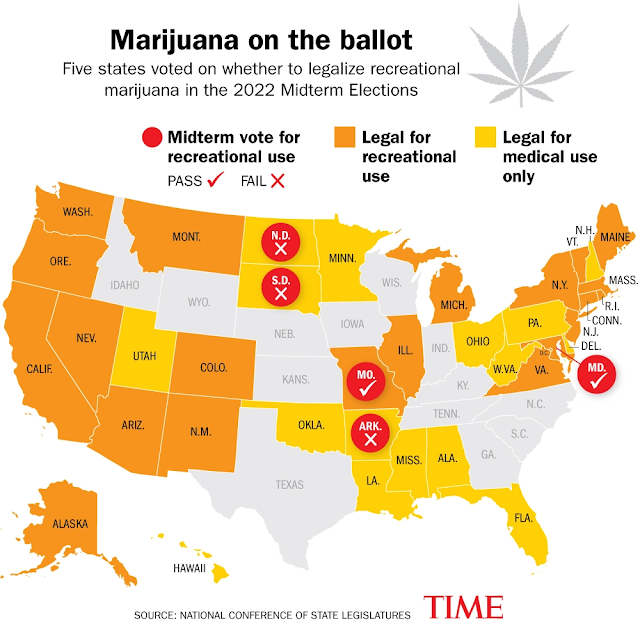The Washington Post has a story about Portugal, and the SF Chronicle has one as well. Both stories touch on the tensions between treating drug addicts with respect, and assuring that cities remain safe and livable.
Here's the Washington Post:
Once hailed for decriminalizing drugs, Portugal is now having doubts By Anthony Faiola and Catarina Fernandes Martins
"Portugal decriminalized all drug use, including marijuana, cocaine and heroin, in an experiment that inspired similar efforts elsewhere, but now police are blaming a spike in the number of people who use drugs for a rise in crime. In one neighborhood, state-issued paraphernalia — powder-blue syringe caps, packets of citric acid for diluting heroin — litters sidewalks outside an elementary school.
"Porto’s police have increased patrols to drug-plagued neighborhoods. But given existing laws, there’s only so much they can do.
...
"Portugal became a model for progressive jurisdictions around the world embracing drug decriminalization, such as the state of Oregon, but now there is talk of fatigue. Police are less motivated to register people who misuse drugs and there are year-long waits for state-funded rehabilitation treatment even as the number of people seeking help has fallen dramatically. The return in force of visible urban drug use, meanwhile, is leading the mayor and others here to ask an explosive question: Is it time to reconsider this country’s globally hailed drug model?
“These days in Portugal, it is forbidden to smoke tobacco outside a school or a hospital. It is forbidden to advertise ice cream and sugar candies. And yet, it is allowed for [people] to be there, injecting drugs,” said Rui Moreira, Porto’s mayor. “We’ve normalized it.”
...
" In the United States alone, overdose deaths, fueled by opioids and deadly synthetic fentanyl, topped 100,000 in both 2021 and 2022 — or double what it was in 2015. According to the National Institutes of Health, 85 percent of the U.S. prison population has an active substance use disorder or was jailed for a crime involving drugs or drug use.
"Across the Atlantic in Europe, tiny Portugal appeared to harbor an answer. In 2001, it threw out years of punishment-driven policies in favor of harm reduction by decriminalizing consumption of all drugs for personal use, including the purchase and possession of 10-day supplies. Consumption remains technically against the law, but instead of jail, people who misuse drugs are registered by police and referred to “dissuasion commissions.”
...Other countries have moved to channel drug offenses out of the penal system too. But none in Europe institutionalized that route more than Portugal. Within a few years, HIV transmission rates via syringes — one the biggest arguments for decriminalization — had plummeted. From 2000 to 2008, prison populations fell by 16.5 percent. Overdose rates dropped as public funds flowed from jails to rehabilitation. There was no evidence of a feared surge in use.
...
"But in the first substantial way since decriminalization passed, some Portuguese voices are now calling for a rethink of a policy that was long a proud point of national consensus. Urban visibility of the drug problem, police say, is at its worst point in decades
...
"A newly released national survey suggests the percent of adults who have used illicit drugs increased to 12.8 percent in 2022, up from 7.8 in 2001, though still below European averages.
...
"Porto’s mayor and other critics, including neighborhood activist groups, are not calling for a wholesale repeal of decriminalization — but rather, a limited re-criminalization in urban areas and near schools and hospitals to address rising numbers of people misusing drugs."
...
"After years of economic crisis, Portugal decentralized its drug oversight operation in 2012. A funding drop from 76 million euros ($82.7 million) to 16 million euros ($17.4 million) forced Portugal’s main institution to outsource work previously done by the state to nonprofit groups,
...
"Twenty years ago, “we were quite successful in dealing with the big problem, the epidemic of heroin use and all the related effects,” Goulão said in an interview with The Washington Post. “But we have had a kind of disinvestment, a freezing in our response … and we lost some efficacy.”
*******
And here are some related paragraphs about San Francisco, in a story in the San Francisco Chronicle about a concentration of drug dealers from Honduras:
THIS IS THE HOMETOWN OF SAN FRANCISCO’S DRUG DEALERS By Megan Cassidy and Gabrielle Lurie | July 10, 2023
"Like many other U.S. cities, San Francisco shifted years ago to treating drug use more like a disease than a crime. The heavy policing approach of the War on Drugs era failed to slow dealers or decrease demand while overcrowding jails and disproportionately punishing people of color, studies show.
"Now one of the most progressive cities in the nation is fracturing over concerns that it has become too permissive. What to do about the Honduran dealers is a key political issue as a major citywide election approaches in 2024.
"On a weekday afternoon in June, a man in his early 30s lay motionless on a SoMa sidewalk outside the Federal Building. On his right, a dozen users smoked fentanyl and crack cocaine or hung bent at the waist, heads suspended at their knees. To his left, a handful of dealers, cloaked in black but for the space around their eyes, continued selling while a passerby revived the man with Narcan, the nasal-spray antidote to opioid overdoses, and as paramedics arrived to treat him a few minutes later.
“I’m so mad at them for ruining my neighborhood,” said Kevin DeMattia, who owns Emperor Norton’s bar and has lived in the Tenderloin for the past 25 years. “Businesses are dying because people don’t want to come to the Tenderloin. They’re ruining the neighborhood in so many ways. They’re poisoning people. … They’re this cancer, this aggressive, metastasizing cancer on the Tenderloin — the dealers and the addicts.”








